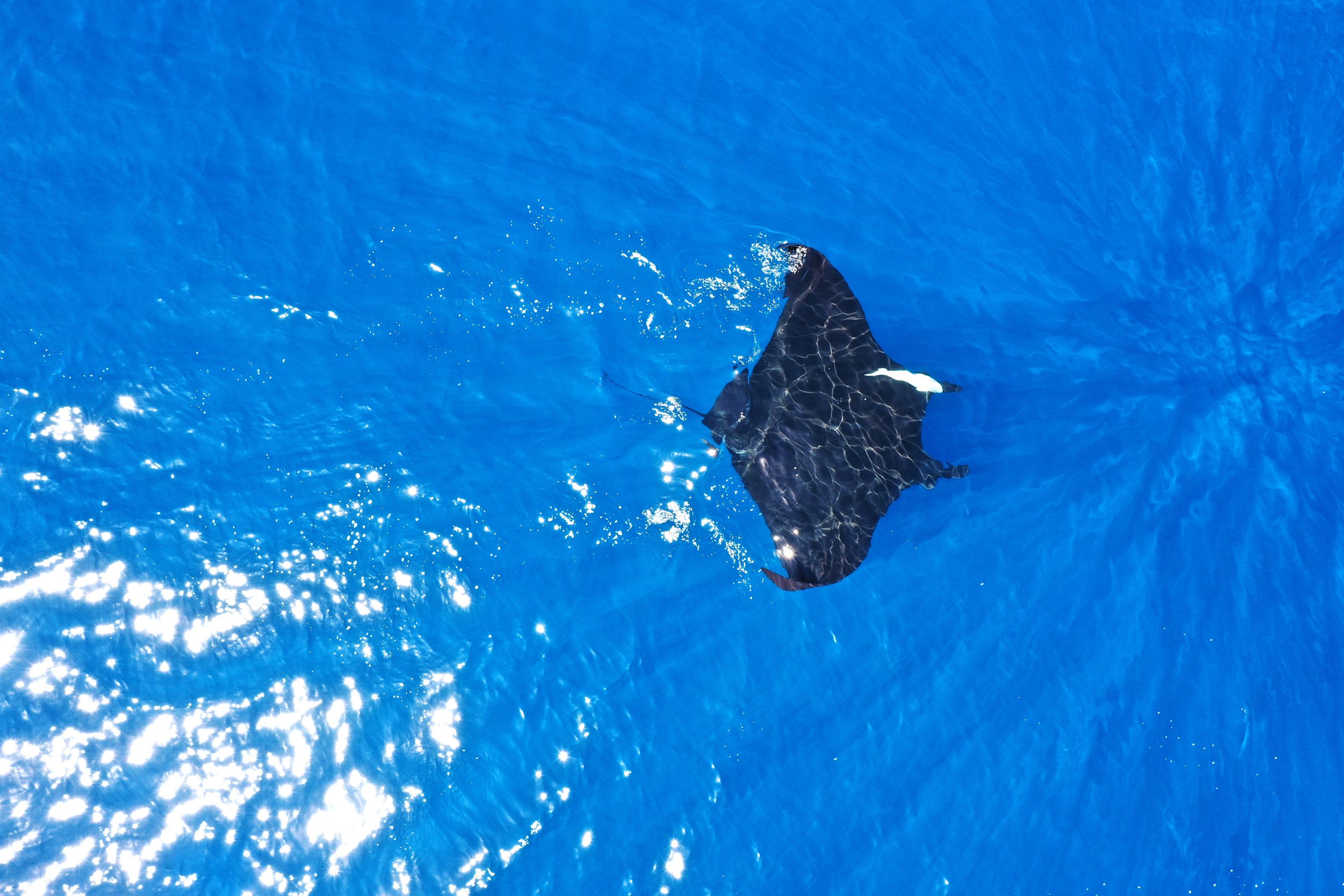The first aerial survey for Oceanic manta rays in Aotearoa
In mid-2024, we got behind the work of Lydia Green, marine scientist and founder of Manta Watch NZ. Her research had reached a critical point in their efforts to better understand Oceanic manta rays and their use of New Zealand waters.
These marine giants are recognised internationally as an endangered species and they are known to frequent the Hauraki Gulf each summer. Yet, until recently, little scientific data existed on their movements or behaviours in this region.
As part of supporting Lydia’s research, we funded Manta Watch NZ to conduct the first dedicated aerial survey for mantas in Aotearoa – an innovative approach designed to enhance data collection and inform conservation efforts.
Aerial surveys offer a significant advantage in marine research, enabling large areas to be covered in a fraction of the time required by traditional boat-based surveys. Taking off from Great Barrier Island, Lydia led a team of researchers and volunteers on a survey flight covering key manta ray habitats. They were joined by Kayla Kingdon-Bebb, CEO for WWF NZ, and journalists from RNZ and TVNZ. Following predetermined routes along depth contours, the team recorded 17 manta ray sightings.
The Importance of Protecting Marine Ecosystems
Despite their global endangered status, Oceanic manta rays remain classified as data deficient in New Zealand, limiting the legal protections available to them. The broader marine environment they inhabit is also under increasing pressure. The Hauraki Gulf has experienced ongoing ecological decline due to overfishing, habitat destruction, and pollution. While new marine protection legislation aims to address these challenges, recent amendments have weakened certain conservation measures, raising concerns among environmental stakeholders.
“Manta rays are a sentinel species, their presence and behaviour provide critical insights into the health of marine ecosystems.”
By gathering robust scientific data, Manta Watch NZ is building the case for stronger protections and improved conservation strategies.
Leveraging Technology and Citizen Science
Manta Watch NZ has launched a citizen science app to encourage public participation in data collection. With over 70% of recorded manta sightings already coming from the public, this tool will streamline reporting and enhance the quality of data available to researchers.
The success of this aerial survey marks a turning point in manta ray research in New Zealand. By combining cutting-edge survey techniques with community engagement, Lydia’s work at Manta Watch NZ is generating a deeper understanding of this species and the marine environments they rely on.
RNZ article: 'Giant batmobiles': In search of the manta rays of the Hauraki Gulf
Photo credit: Giant Oceanic manta ray swimming in the Hauraki Gulf, Manta Watch NZ


